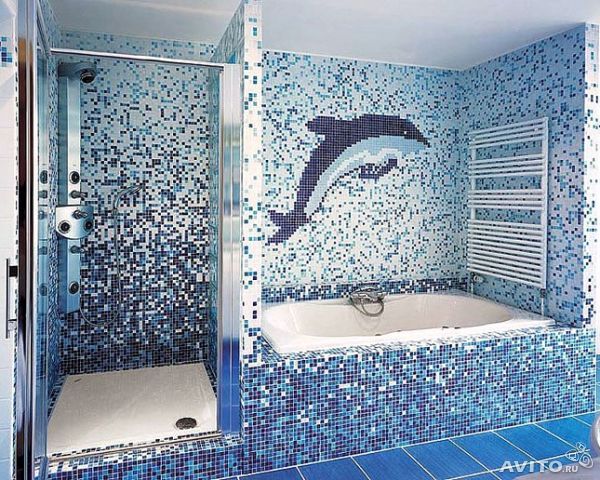Gas cylinder in the house. Bottled gas: what you need to know about it to live safely
Last time I wrote about how to use bottled gas outside.
Now I’ll tell you about how I introduced this same gas into the house before the Darina gas stove. About replacing jets in the stove.
Initially I planned to introduce gas like this:
- we take metal pipe 1/2
- cut it into pieces of the required length
- using tow and gas paste, we pack in turns (in total it was necessary to make three turns at the corners.
In this case, the pipe would go up the facade of the house, through a sleeve in the wall of the house it would go inside the house, in the house it would go down to a distance of about 50 cm, after which a tap, a dielectric gasket would be installed and then connected to the stove using a flexible hose.
For these purposes, a 6-meter black VGP pipe was purchased (two sections of 3 meters each).
At first I thought of bending this pipe with a lever right on the spot:
- cut threads on the edges, pour water into them, plug the ends with plugs and bend them on the mandrel as needed...
The following were purchased at Leroy:
- mini set of dies (1/2, 3/4 and 1 inch) for 1,600 rubles (prices June 2016)
- steel bellows hose for female-female gas connection,
- ball valve for gas 1/2 "female-female" and
- dielectric spacer 1/2 "male-male"
But here’s the problem - when I started cutting this very thread, I discovered that this very thread on the pipe did not come out clean, but crumbled. This really stressed me out.
In the markets in the area, I could not find a similar pipe for supplying bottled gas, and since the gas had to be connected quickly enough, it was decided to make a gas supply according to a different scheme:
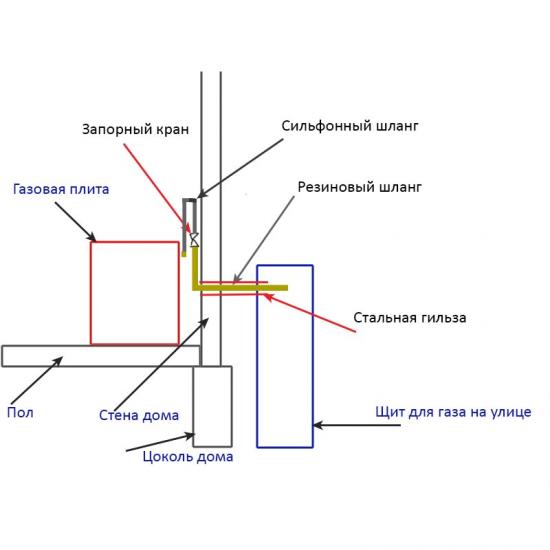
We make a passage through the wall of the house with a steel sleeve directly from the cabinet with bottled gas
- Pass this sleeve (32 mm in outer diameter) directly from the closet into the house, which will also external protection gas hose.
- We connect the reducer to the cylinder with a rubber hose.
- We lead this hose through a metal sleeve into the house.
- In the house gas hose comes out at a level somewhere in the middle of the gas stove.
- then carefully lift the gas hose up the wall and attach a ball valve for gas to it.
- screw a dielectric spacer onto the gas tap (it is no longer necessary, but since it is already there...)
- To ball valve We connect a bellows steel hose with which we connect the gas stove.
This way, I still have the opportunity to later replace either the rubber hose with another one or subsequently run a steel pipe through the sleeve instead.
In the cabinet itself for bottled gas, in an additional shelf, I drilled a hole and inserted a fitting there for attaching Cofulso steel corrugated pipes through which I passed a rubber hose for gas. This will avoid the danger of cutting the rubber hose on the edges of the metal shelf.
Accordingly, the edges of the pipe sleeve were freed from sharp burrs.
Then, having connected everything, I started checking:
- shut off the ball valve in the house,
- opened the valve on the cylinder
- applied foam to the connections: gearbox with cylinder, gearbox with rubber hose, rubber hose with ball valve. As a result of the inspection, no gas leaks were found.
Myself gas cylinder I filled up 27 liters literally the day before...
I don’t know what the problem was, but none of the 4 burners were on. And only after some time had passed - probably about 15 minutes - I was able to light the gas on the stove.
Before that, I closed the valve on the gas cylinder once and opened it again.
I still can’t figure out what the problem was... But the oven never caught fire... It’s not clear.
UPD
About the oven:
- Everything is fine with igniting the oven... As it turned out, “Darina” uses gas control for the oven (in my simplest version of the stove), so in order to ignite the oven you need to:
1. Light a match
2. Press and turn the oven knob
3. WITHOUT releasing the pressed handle after 5 seconds, bring the match to the oven burner
4. That's it! The burner lights up...
A few photos:
32mm passage under the steel pipe from the kitchen side: 
Pipe supply to the stove and to the gas tap: 

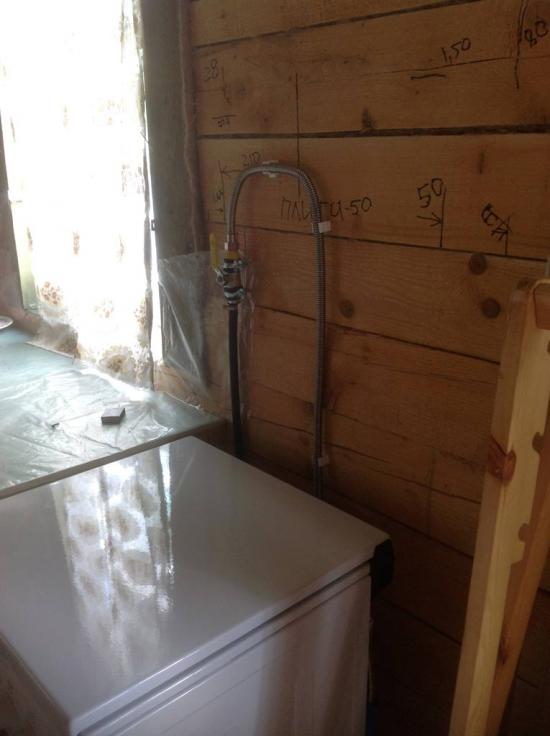

Inserting a pipe from the house into the gas shield: 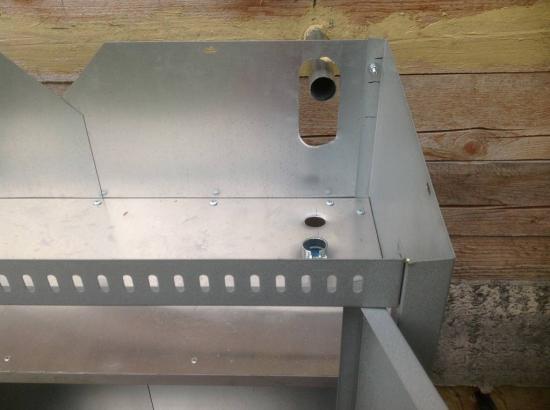

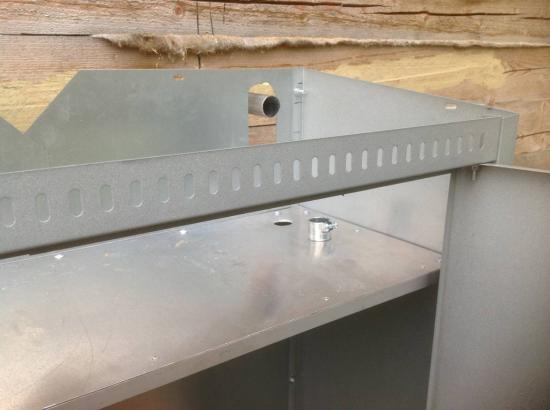
Input type steel pipe into the shield on the side: 
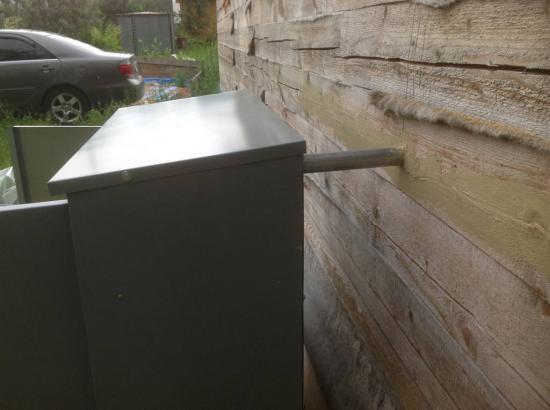
Passage of a rubber gas hose from a steel pipe into a shield with bottled gas: 
Burning of the burners of the Darina gas stove from bottled gas: 
The other day there was a very heavy downpour with a crazy wind... just after I installed the cabinet - and then immediately there was such a check for bad weather.
I must say that after the rain I didn’t find a single drop of water inside the cabinet - I was even surprised...
But the wind was such that it broke huge birch trees that fell on the fences - you can see what it looks like...
It was the neighbors who had trouble...


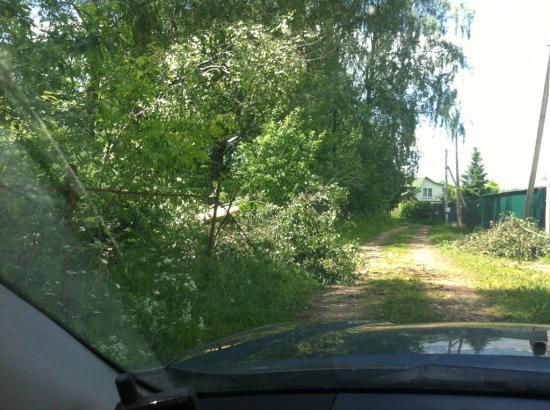
TOPSPETS.RU – professional connection gas cylinder for the stove, hob and oven in the country inexpensively and with a 3-year guarantee!
COST OF INSTALLING AND CONNECTING A GAS CYLINDER TO A STOVE, HOB AND OVEN
Connecting a gas stove to a cylinder – 1300 rubles + replacing nozzles (jet) and setting low fire on the upper burners 1000 rubles + 1000 rubles on the lower ones.
Connecting a gas hob to a cylinder – 1300 rubles
Gas connection oven to the cylinder – 1300 rubles + replacement of injectors (jet jets) and setting the low flame of the burners 1000 rubles.
Connecting a gas cylinder to the stove costs 1,300 rubles.
DEPARTURE WITHIN MKAD FREE!
TRAVING OUTSIDE THE MKAD – 30 RUB/km (up to 3 km – 100 RUB)
WARRANTY – 3 YEARS! (To work and our material)
OFFICIALLY!(Admission to all work)
APPLICATIONS BY NUMBER: 8-495-795-74-59 (from 8.00 to 23.00)
MAYBE PERFORMANCE APPLICATIONS IN A DAY ORDER!
WE ARE WORKING SEVEN DAYS A WEEK AND HAPPY HOLIDAYS!
Installation and connection of a gas stove, hob, oven to a cylinder for 1300 rubles includes:
- installation on a prepared place;
- connection to a bellows hose;
- checking the tightness of connections;
- leveling the gas stove;
- test run and operation consultation;
- 3 year warranty on work done.
Discounts for pensioners, veterans, disabled people, students, large families, mothers with small children, regular customers and for each additional any device!
Cost of additional work that may be needed when installing and connecting a gas stove, hob, oven to the cylinder (rub/piece, meter):
- dismantling the old device on the hose – 300
- dismantling the old device on the pipe – 500
- disposal of old device – 1000
- replacing the old one gas tap for a new one – 1000
- installation of a gas tap – 200
- installation of a metal cabinet – 1000
- drilling in wooden wall – 500
- drilling in brick, block wall – 1000
- installation and connection of a gas cylinder – 1300
- replacing nozzles and setting low fire – 1000
- installation of dielectric (gas insulator) – 100
- installation of coupling, adapter, angle – 100
- installation and connection of a bellows hose – 200
- installation and connection of electrical plug -100
- connecting a separate power supply line with brackets – 100
- supplying a separate power supply line in a box – 150
- connecting a separate power supply line in the baseboard – 100
- installation of a circuit breaker in the electrical panel – 300
- installation of an RCD in an electrical panel – 500
- installation of overhead socket – 300
- cutout in Chipboard table top for hob – 700
- treatment of the cutout with sealant – 100
- covering the cutout with metallic tape – 200
- cutout in tabletop artificial stone – 1000
- cutout in chipboard tabletop for hose – 300
- cutout for a hose in an artificial stone countertop – 500
- visit of a specialist for measurements (consultation) 500 rubles
- trip to the store for material 1500 rubles
- false departure 500 rubles
Check the cost of work not listed in the price list with the master or by calling: 8-495-795-74-59.
Cost of materials that may be needed when installing and connecting a gas stove, hob, oven to the cylinder (rub/piece, meter):
- gas ball valve straight floors – 300
- corner gas ball valve – 500
- dielectric (gas insulator) 1/2 – 300
- dielectric (gas insulator) 3/4 – 500
- coupling, adapter – 100
- corner – 200
- bellows hose – 300
- gearbox – 1000
- electric plug -100
- circuit breaker – from 200
- wire PVS 3*1.5 – 50
- socket – 200
Check the cost of materials not listed in the price list with the master or by calling: 8-495-795-74-59.
Installing and connecting a gas cylinder to a stove, hob, oven in a complex costs approximately 7-10 thousand rubles, depending on the distance from the Moscow Ring Road.
CONNECTING THE GAS CYLINDER TO THE STOVE
How to connect a gas cylinder? To connect the cylinder to the stove, you need to install a metal cabinet, install a metal pipe or stretch a rubber or bellows hose. Then install the cylinder in the cabinet and connect the reducer, hose, shut-off valve to it and connect the gas cylinder to the stove using a hose. All connections must be checked for leaks.
And most importantly, the gas cylinder must be connected to the stove by a specialist.
Gas cylinders come in both metal and composite types.
Metal gas cylinders are much cheaper. They need to be installed in a metal cabinet, which should be located on the street near the house. The cabinet is installed on blocks or slabs and attached to the wall. The cabinet should be located at a distance of 1 meter from the windows and preferably not on the sunny side.
One or two cylinders are installed in the cabinet. A pressure reducer is connected to the cylinder, and a gas hose is connected to it, which is connected to the pipe. The pipe enters the house through a hole in the wall. A shut-off valve is screwed onto the pipe, a dielectric and a bellows hose are attached to it, which, in turn, is screwed to the stove, hob, or through a tee also to the oven.
Then, you need to replace the jets (nozzles) on the devices and, if necessary, adjust the burners. Next, be sure to check all connections for leaks.
A composite cylinder is expensive, but explosion-proof. It can be installed directly in the house, for example in kitchen cabinet. Then screw the reducer, hose, faucet, dielectric to it and use a bellows hose to connect the gas cylinder to the stove, hob and oven.
Call 8-495-795-74-59 and order a professional connection of the cylinder to the stove with a 3-year guarantee!
CONNECTING A GAS STOVE, HOB, OVEN TO THE CYLINDER
How to connect a stove, hob, oven (oven) to a cylinder? To do this, you must first call a specialist who will correctly install the stove, panel or oven, replace the nozzles and adjust the burners. A specialist can also change or install a shut-off valve, stretch a gas hose or pipe and, of course, install and connect a cylinder. After all installation work The technician checks all connections for leaks and tests the gas stove, surface or oven.
Connecting a gas stove, hob(panels), oven (oven) to the cylinder at the dacha will be competently and professionally produced by the specialists of our company.
Call 8-495-795-74-59 and our Master will professionally and the shortest possible time will connect the gas stove to the cylinder at your dacha.
TopSpets - installation and connection of gas stoves, hobs, ovens to the cylinder in Moscow and the Moscow region inexpensively and with a 3-year guarantee!
Along with all districts of Moscow, our company provides services in all cities and towns of the Moscow region. At the same time, the cost of the Master’s travel outside the Moscow Ring Road is added to the cost of the order. The cost of each kilometer is 30 rubles and is calculated only one way.
So, our company carries out replacement, installation and connection washing machine both in Moscow and the Moscow region (Reutov, Zheleznodorozhny, Balashikha, Lyubertsy, Kotolniki, Dzerzhinsky, Vidnoye, Domodedovo, Shcherbinka, Podolsk, Moskovsky, Odintsovo, Krasnogorsk, Pavshinskaya floodplain, Khimki, Dolgoprudny, Mytishchi, Korolev, Pushkino, Shchelkovo, Nakhabino , Lobnya, Zelenograd, Elektrogorsk, Pavlovsky Posad, Orekhovo-Zuevo, Elektrostal, Noginsk, Ramenskoye, Zhukovsky and other cities and towns of the Moscow region).
We also perform electric installation work, furniture assembly and apartment renovation.
We work throughout Moscow and the nearest Moscow region!
Warranty service household appliances performed by authorized service centers, which are indicated in your warranty cards.
Our specialists will always answer all your questions.
The professionalism and experience of our technicians will allow you to start using the equipment in the shortest possible time after purchase.
We guarantee high quality work, comfort during execution and efficiency!
We provide a guarantee for the work performed and installed material 3 years!
Bottled gas is used almost everywhere in villages and dachas. Especially far from gas pipelines. This is very convenient, because it is easier to cook on a gas stove than to heat the stove with coal or wood. But unfortunately, bottled gas it's not always safe.
From the article you will learn:
How to install a gas cylinder correctly

move at will gas equipment such as: gas stove for bottled gas, geyser, balloon, hob for bottled gas, gas panel for bottled gas. All this should only be done by specialists gas industry.
If you need to install bottled gas, you should contact your local gas service, where you will be registered as a consumer of bottled gas and issued with the appropriate document. Listen to the instructions, bring home leaflets with the rules of use and find out what the price of bottled gas is.
You can buy and exchange a gas cylinder only at specialized points. They will tell you where to find them. gas service. You cannot sell or buy a gas cylinder from your own hands!
Which cylinder is better to take?
The smallest gas cylinder is 5 liters. This amount of gas, if used very economically, will last you 1.5-2 weeks at most. It is better to buy a 50 liter gas cylinder. In this case, a couple of cylinders will be enough for the entire summer season, even if you use gas very intensively.
Don't be afraid of being underweight
Gas cylinders are charged with liquefied propane-butane at specialized stations. The gas cylinder is filled with gas under pressure, then it is carefully closed, weighed, and checked for leaks. And finally, they put a plug on the valve (gas cylinder 27 and gas cylinder 50). A valve is installed on a portable 5L gas cylinder. Keep in mind: you can buy a gas cylinder only upon presentation of a document received from the gas industry.
At the exchange office, you have the right to demand that the gas cylinder be weighed in front of you. In this case, you need to be wary not of underweight, but, on the contrary, of excess gas, since it increases the pressure on the walls of the cylinder and creates an explosive situation.
Installation of gas cylinders
Installing bottled gas always involves placing the cylinder in a special metal box. Before buying a box for a gas cylinder, consult with the gas service provider where in your area it is best to purchase or have such a box made to order, or find out what standards you can weld it by yourself, if you know how to do it. And do not forget that the box for the gas cylinder must stand on a concrete foundation.
The distance from the box to the windows and doors of the house should be at least 1 m, and up to cesspool or a well - 3 m. The fact is that propane is heavier than air and, when leaking, spreads along the ground, collecting in depressions, holes, and any low places. If the slightest spark gets there, a strong explosion can occur.
Please note, by the way, that liquefied propane gas is more dangerous than regular network gas. In the event of a leak, it can explode when its volume is from 2 to 10% of the volume of the room, while for network gas the danger of explosion occurs when this figure is 5-15%.
You might also be interested in:
